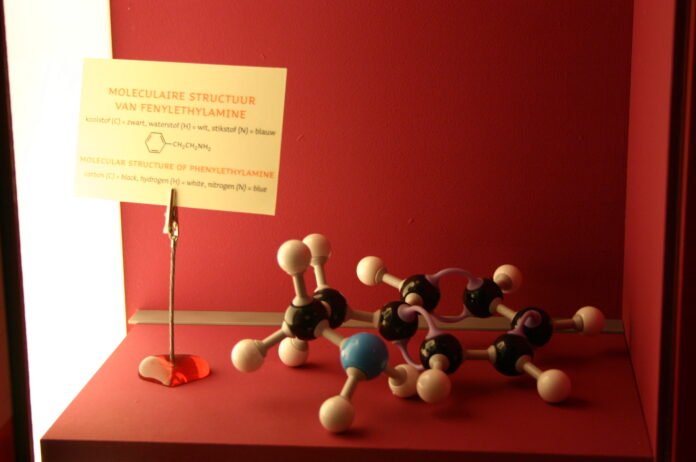At the Massachusetts Institute of Technology (MIT), innovation often lies at the crossroads of unexpected disciplines. For senior Madison Wang, a double major in chemistry and creative writing, the intersection of science and storytelling is not just a theoretical idea—it’s a guiding principle shaping her academic journey and future aspirations.
A native of Buffalo, New York, Wang discovered her passion for writing during her middle school years. Her growing interest in chemistry fit seamlessly alongside her commitment to crafting engaging narratives, eventually inspiring her to pursue both fields formally at MIT. “It was a really good fit,” Wang recalls of her early decision to apply to the Institute. “There was positive energy and vibes, and I had a great feeling overall.”
The Storytelling Power of Science
Wang firmly believes that the worlds of science and literature are not as separate as they may seem. “In science and in writing, you have to tell an effective story,” she says. “People respond well to stories.” Her experience in both disciplines has shown her that storytelling techniques can enhance scientific communication, while rigorous scientific understanding can enrich world-building in fiction.
READ MORE: Giant Icebergs Once Drifted Near British Shores, Scientists Discover
“Chemistry is practical, complex, and interesting,” Wang explains. “It’s about quantifying natural laws and understanding how reality works.” According to her, both writing and chemistry help individuals see the irregularities of the world more clearly, offering tools to dismantle the artificial divides between the sciences and the humanities.
“Understanding magnetism, material properties, and believing in the power of magic in a good story—these are why we’re drawn to explore,” she reflects. “Chemistry describes why things are the way they are, and I use it for world-building in my creative writing.”
Academic Foundations and Inspirations
Wang’s academic experience at MIT has further nurtured her interdisciplinary ambitions. She speaks highly of MIT’s creative writing program, particularly a course taught by Pulitzer Prize-winning author and Comparative Media Studies/Writing Professor Junot Díaz. Exposure to such high-caliber mentorship affirmed her belief that powerful storytelling could be supported by robust scientific foundations.
Her passion for science communication was also influenced by renowned authors like Sam Kean and Deborah Blum. Kean’s The Disappearing Spoon and Blum’s The Poisoner’s Handbook captivated Wang with their storytelling styles that humanized and dramatized scientific discoveries. “They each put a lot of work into bridging the gap between what can sometimes be sterile science and an effective narrative that gets people to care about why the science matters,” Wang notes.
The Multifaceted Nature of Creativity
For Wang, genres like fantasy, science fiction, romance, and horror all offer unique tools to construct compelling narratives. “I have gripes with committing to a single genre, so I just take whatever I like from each and put them in my stories,” she says, emphasizing her creative flexibility.
Similarly, she views chemistry as a discipline best learned and taught through practical application. “It’s important to ground chemistry in the real world to create connections for students,” she argues. She cites the example of Fritz Haber’s synthesis of ammonia—a scientific breakthrough that revolutionized agriculture—as an illustration of how real-world applications of chemistry have historically reshaped society.
Toward a More Collaborative Future
Looking beyond the classroom, Wang is deeply concerned about the broader societal implications of technological and scientific progress. With challenges like climate change, political instability, and shifting global alliances, she emphasizes the need to break down the traditional silos that separate different academic and professional domains.
“Technology can be a tool for harm,” Wang warns. “Inviting more people inside previously segregated spaces helps everyone.” For her, collaboration and cooperation across disciplines are vital to addressing the complex challenges facing the modern world.
Wang sees criticism—both in science and creative writing—as an essential tool for growth. “Effective communication, explaining complex concepts, and partnering to develop long-term solutions are invaluable when working at the intersection of history, art, and science,” she says. Whether refining a story’s plot or improving a scientific theory, constructive feedback is key to continuous improvement.
Life Beyond the Laboratory and the Page
Outside of her academic pursuits, Wang participates actively in MIT’s extracurricular community. She is a member of the MIT Anime Club, the Sport Taekwondo Club, and DAAMIT (Digital Art and Animation at MIT). Each of these groups offers her different ways to explore creativity and connect with diverse communities.
The competitive element of taekwondo provides her with an outlet for her competitive spirit, while activities like DAAMIT stimulate her imagination and storytelling skills. “It’s fascinating exploring others’ minds,” Wang shares, acknowledging how these experiences enrich her creative output.
Challenging the Science-Humanities Divide
Wang challenges the traditional view that science inherently holds more value than the humanities. She believes that writing and learning about science can bridge the perceived gap between the two fields. “Fields like conservation and history allow for continued exploration of that intersection,” she asserts.
Ultimately, she envisions a future where science and the humanities are seen as equally important to understanding and shaping the world. “The humanities and science have equal value,” Wang says, emphasizing her commitment to advocating for a more integrated and holistic approach to education and innovation.
Conclusion: A Future Written in Chemistry and Stories
As she nears graduation, Madison Wang stands as a powerful example of the potential unlocked when different ways of knowing and seeing the world are brought together. Her journey at MIT has not only allowed her to nurture her twin passions for chemistry and creative writing but has also equipped her with the tools to build bridges between disciplines that are too often kept apart.
In a world increasingly defined by complexity and interconnectedness, Wang’s vision—where storytelling and scientific inquiry work hand in hand—offers a hopeful path forward. Whether in the lab, the library, or the pages of her next novel, Madison Wang is ready to shape the future, one molecule and one story at a time
